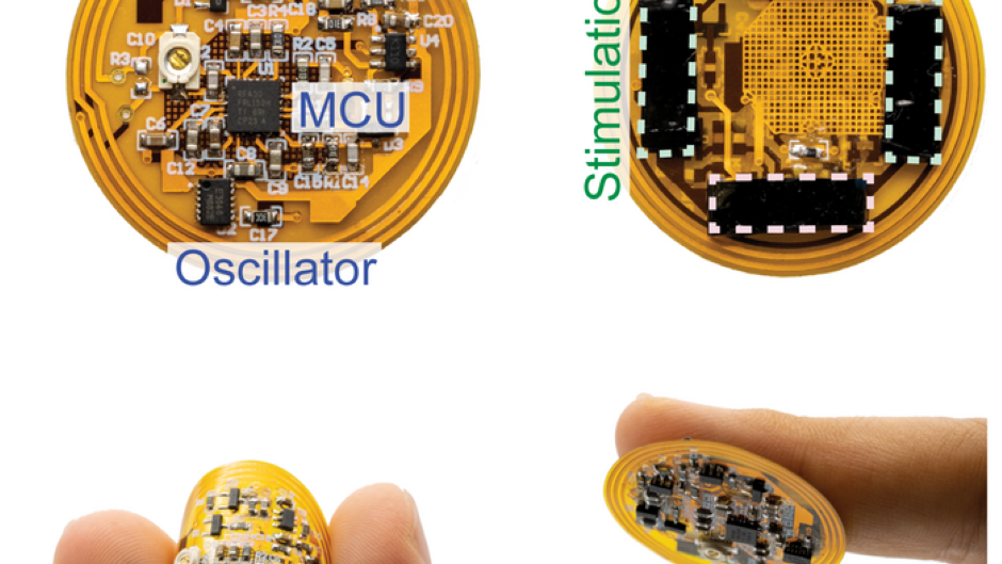The researchers at Stanford University said their device promotes faster closure of wounds, increases new blood flow to injured tissue, and enhances skin recovery by significantly reducing scar formation. Their findings have been published in Nature Biotechnology.
The smart bandage is composed of wireless circuitry that uses impedance/temperature sensors to monitor the progression of wound healing. If the wound is less healed or an infection is detected, the sensors inform a central processing unit to apply more electrical stimulation across the wound to accelerate tissue closure and reduce infection. The researchers were able to track the sensor data wirelessly in real time on a smart phone.
The electronic layer, including a microcontroller unit (MCU), radio antenna, memory, electrical stimulator, biosensors, and other components, is 100 microns thick. The circuitry is placed atop an engineered hydrogel that is integrated to deliver healing electrical stimulation to the injured tissue and collect real-time biosensor data.
According to Stanford, the polymer in the hydrogel is designed to adhere securely to the wound surface when needed, and pull away cleanly and gently without harm to the wound when warmed to just a few degrees above body temperature.
In a statement, Yuanwen Jiang, co-first author of the study, said: “In sealing the wound, the smart bandage protects as it heals. “But it is not a passive tool. It is an active healing device that could transform the standard of care in the treatment of chronic wounds.”
Electrical stimulation has been previously reported to accelerate the migration of keratinocytes to the wound site, limit bacterial infections and prevent the development of biofilms on wound surfaces, to proactively promote tissue growth and help with tissue repair. The researchers were able to take this technology and integrate it with real-time biosensor data to provide a novel automated treatment modality informed by biosensors.
Related content
The smart bandage senses conductivity and temperature changes in the skin as the wound heals—electrical impedance increases as wounds heal and local temperatures decline as inflammation subsides.
“With stimulation and sensing in one device, the smart bandage speeds healing, but it also keeps track as the wound is improving,” said Artem Trotsyuk, a co-first author of the study. “We think it represents a new modality that will enable new biological discovery and the exploration of previously difficult-to-test hypotheses on the human healing process.”
The researchers believe that electrical stimulation promotes the activation of pro-regenerative genes such as Selenop, an anti-inflammatory gene that has been found to help with pathogen clearance and wound repair, and Apoe, which has been shown to increase muscle and soft tissue growth. Similarly, electrical stimulation increased the amount of white blood cell populations, namely monocytes and macrophages, through the recruitment of greater amounts of M2 anti-inflammatory macrophages, which have been previously reported as pro-regenerative and playing a key role in the extracellular matrix formation that is required during the proliferative phases of wound healing.
The researchers caution that the smart bandage is currently a proof-of-concept and that challenges remain. These include increasing the size of the device to human scale, reducing cost, and solving long-term data storage issues.





Comment: How engineering innovations are transforming washing machine accessibility
I wonder if Mr Sawhney has considered a sit-on version, with pedals?